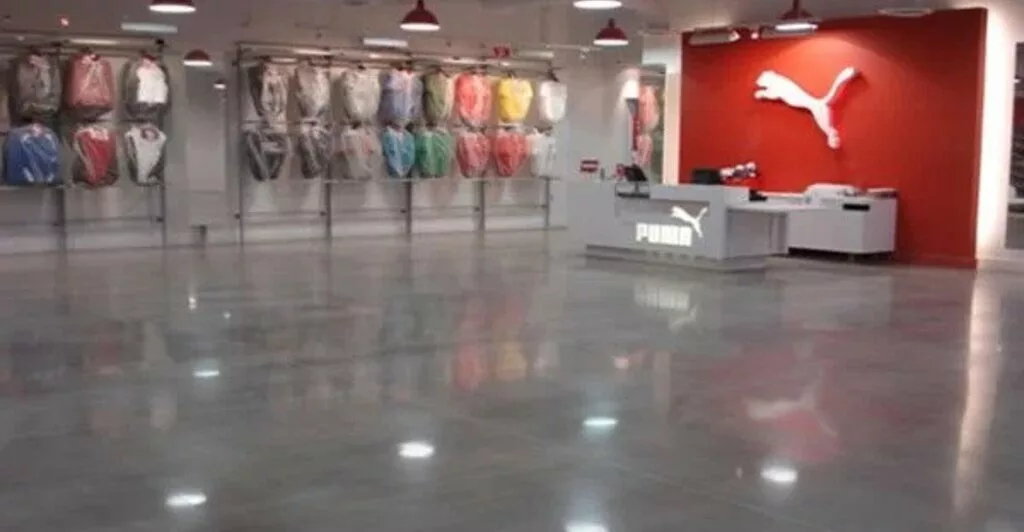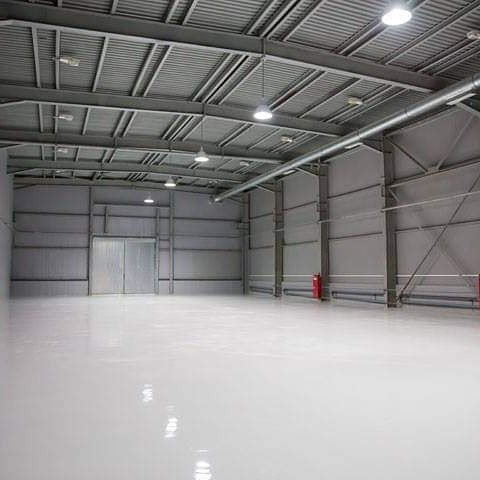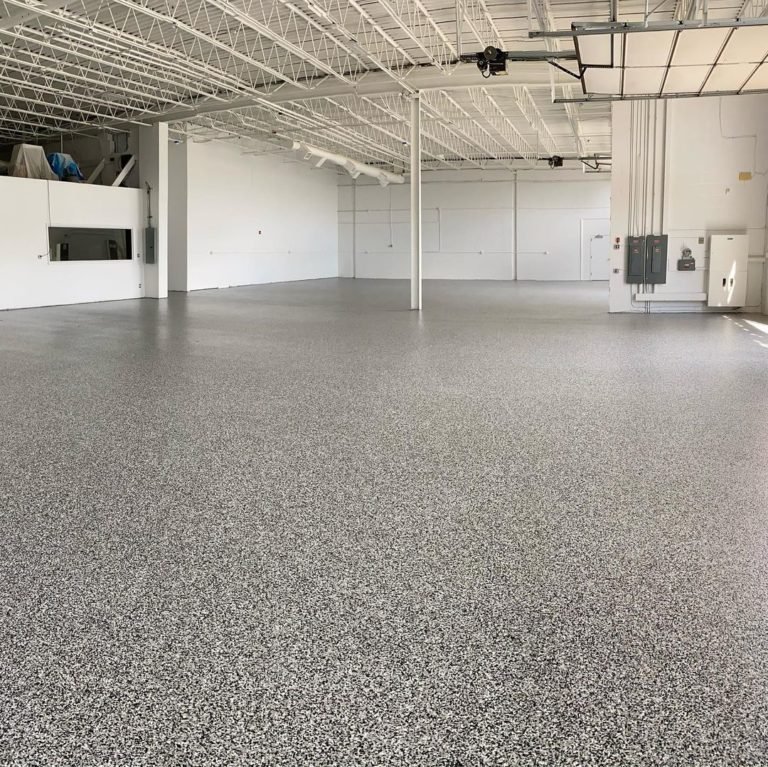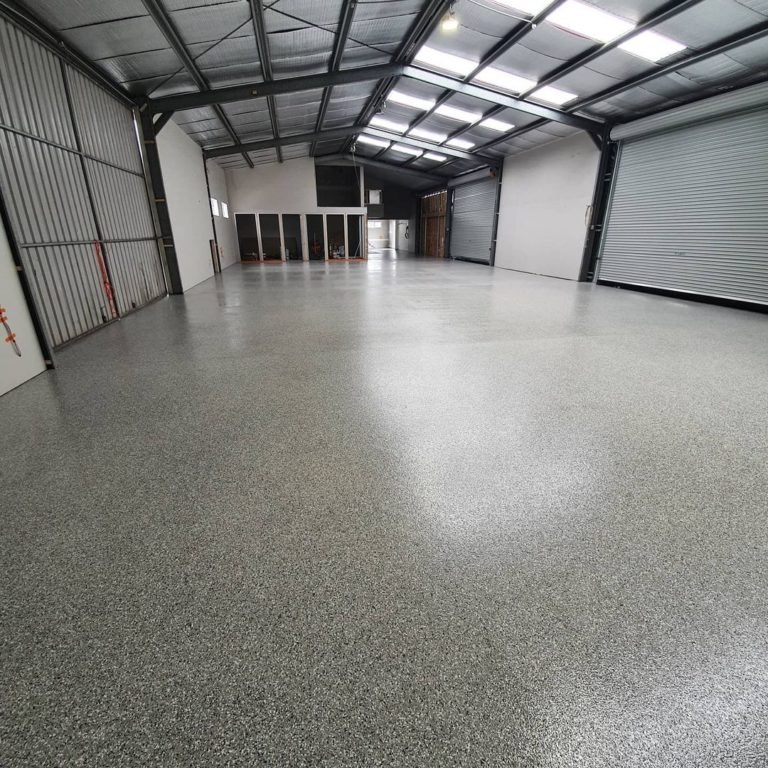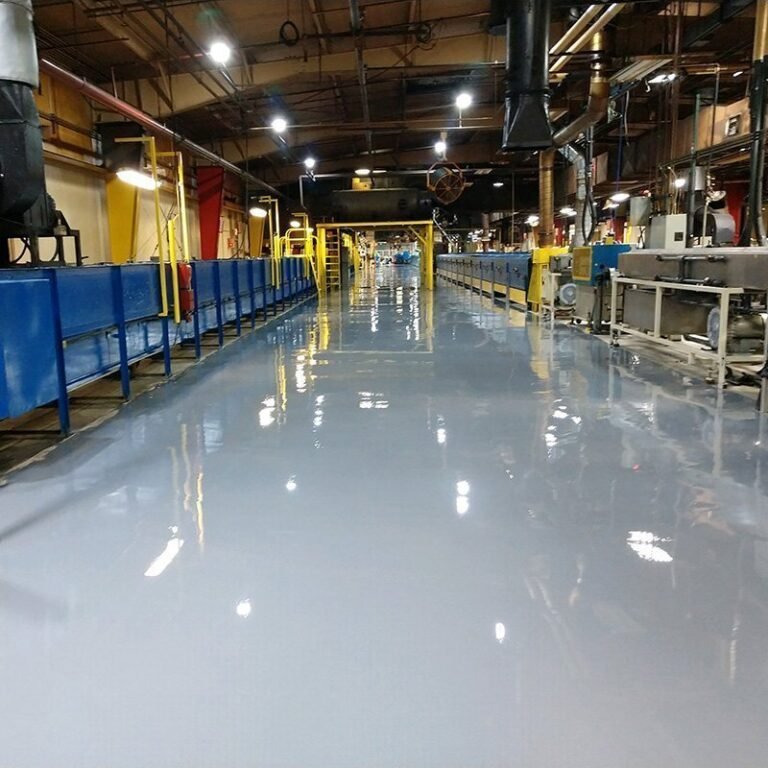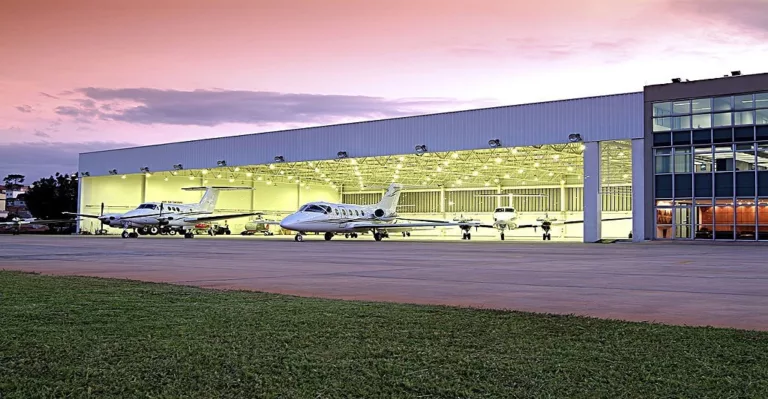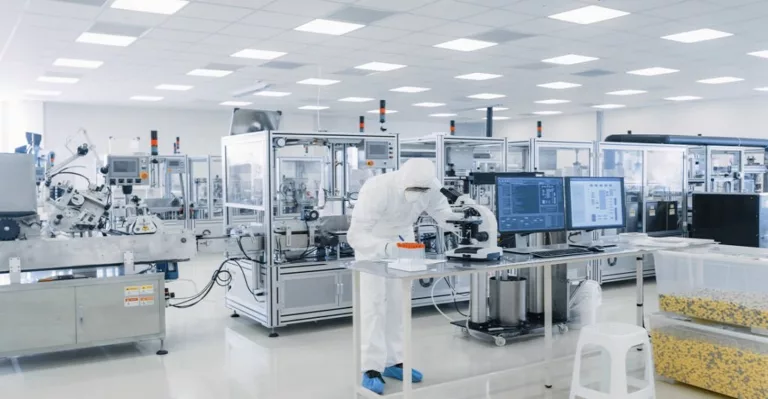Types of Epoxy Flooring & Their Advantages — Vancouver & BC Guide
A practical guide to self-levelling, mortar, flake, quartz and vapor-barrier epoxy systems—and how to choose the right floor for homes, shops, warehouses and facilities across Vancouver & British Columbia.
Not all epoxy floors are built the same. The system that looks perfect in a residential garage might struggle in a forklift aisle or food plant—and vice versa. Choosing the right type of epoxy flooring for your space is the difference between a floor that lasts a couple of years and one that performs for a decade or more.
Below, we break down the most common epoxy systems used across Vancouver and BC—self-levelling epoxy, epoxy mortar, flake epoxy, quartz / gravelling epoxy and vapor-barrier epoxy—with real-world advantages, ideal use cases and selection tips.
Core types of epoxy flooring systems
1. Self-levelling epoxy floors
Self-levelling epoxy is a fluid-applied system that flows to create a smooth, seamless surface over properly prepared concrete. It’s popular in offices, showrooms, residential garages and light industrial areas where a clean, modern look is important.
- Key advantages: smooth, high-build surface that hides minor imperfections and creates a “poured” look.
- Performance: excellent durability for foot traffic, carts and light vehicles when built to the correct thickness.
- Aesthetic options: solid colours, subtle tints, and integration with clear topcoats or flakes.
2. Epoxy mortar floors
Epoxy mortar systems combine 100% solids epoxy with graded aggregates (often sand or quartz) to create a trowel-applied, high-compressive-strength floor. This is the workhorse for repairing pitted concrete and handling serious loads.
- Key advantages: extremely high impact and compressive strength; ideal for warehouses, loading docks, repair bays and heavy production areas.
- Repair value: can rebuild spalled, eroded or cracked slabs and then be coated or sealed.
- Longevity: often delivers the longest life in heavy-duty industrial settings when combined with a protective topcoat.
3. Flake epoxy floors
Flake epoxy floors broadcast coloured vinyl flakes into the epoxy body coat, then seal them with clear coats. They’re a staple for residential garages, showrooms, locker rooms and corridors.
- Key advantages: hides concrete imperfections and debris; adds visual depth and interest.
- Safety: flake texture plus the right topcoat build can improve slip resistance.
- Design: wide range of colour blends—from subtle greys to bold, brand-matched schemes.
4. Quartz / gravelling epoxy floors
Quartz (sometimes called “gravelled”) epoxy combines coloured quartz sand with epoxy binders to create a high-traction, decorative and extremely durable surface. Common in food plants, wash bays, commercial kitchens, labs and high-traffic circulation areas.
- Key advantages: outstanding slip resistance, even when wet or oily.
- Durability: suited to trolleys, carts and frequent wash-downs.
- Branding: blends, borders and even simple logos can be incorporated into the design.
5. Vapor-barrier epoxy floors
Vapor-barrier (or moisture-mitigation) epoxies are applied as a primer layer to control moisture vapour coming through the slab. In damp climates like the Lower Mainland, this can make or break epoxy performance.
- Key advantages: reduces the risk of bubbling, blistering and debonding caused by moisture drive.
- Best use: on-grade slabs, older concrete, or spaces with a history of moisture issues.
- System role: forms the foundation under self-levelling, flake, quartz or mortar builds.
Quick comparison of epoxy flooring types
Different epoxy floor types shine in different environments. Use this as a high-level guide when planning your project in Vancouver or anywhere in BC.
| Epoxy Type | Best For | Main Advantages | Key Considerations |
|---|---|---|---|
| Self-levelling epoxy | Garages, showrooms, studios, offices. | Smooth, seamless, modern look; good durability with proper build. | Needs well-prepared substrate; may show telegraphing over major defects. |
| Epoxy mortar | Heavy industrial, repair bays, load paths. | Very high strength; rebuilds damaged slabs; long service life. | Higher cost; typically used where loads or damage justify it. |
| Flake epoxy | Garages, retail, corridors, locker rooms. | Decorative, slip-tuned, hides dirt and imperfections. | Requires good topcoat design to balance texture and cleanability. |
| Quartz / gravelling epoxy | Food plants, wash bays, entrances, labs. | Excellent traction; highly durable and chemical-resistant. | More textured; cleaning SOPs must match aggregate profile. |
| Vapor-barrier epoxy | Moisture-prone slabs; ground floors. | Protects system from moisture-related failures; supports long-term adhesion. | Part of a system—not a finished wear surface on its own. |
How to choose the right epoxy floor type
The “best” epoxy system is the one matched to your traffic, environment and expectations—not just the one that looks good on day one. A few key drivers:
- Passenger vehicles vs. loaded forklifts and pallet jacks.
- Point loads from racking, lifts, machinery or jack stands.
- Impact risk from dropped tools, drums or parts.
- Turning traffic in tight areas like parkades or loading docks.
- On-grade vs. suspended slabs; previous moisture history.
- Coastal humidity and rain tracked in across Vancouver & BC.
- UV exposure at door thresholds, ramps and exterior aprons.
- Thermal shock risk in wash bays, commercial kitchens and plants.
- Smooth architectural look vs. decorative flakes or quartz.
- Required level of slip resistance by zone.
- Brand colours, logos and wayfinding / line striping.
- Desired gloss level and light reflectivity.
- Upfront budget vs. expected service life.
- Cost difference between basic vs. high-build or mortar systems.
- Ability to re-topcoat instead of fully replacing later.
- Downtime cost if the floor fails prematurely.
Simple practices that maximise epoxy floor advantages
Once the right epoxy type is installed, a few straightforward habits go a long way toward protecting performance.
- Sweep or dust mop to remove grit that can scratch topcoats.
- Spot clean oils, chemicals and food spills as they occur.
- Use mats at entries to catch road salt and moisture.
- Auto-scrub with a pH-neutral cleaner where appropriate.
- Inspect turning lanes, thresholds and high-wear areas.
- Confirm cleaning products remain compatible with the system.
- Use plates or pads under jack stands and heavy feet.
- Avoid dragging pallets or machinery across the surface.
- Maintain wheels, casters and dock equipment in good condition.
- Loss of gloss and visible wear in traffic lanes.
- Texture reduced in wet/greasy zones that rely on traction.
- Minor damage before it grows into widespread failure.
Which type of epoxy flooring is best for a residential garage?
For most garages in Vancouver and BC, a flake epoxy system over a moisture-tolerant or vapor-barrier primer is ideal. It hides imperfections, improves traction, cleans easily and stands up well to road salt and daily use.
When should I choose epoxy mortar instead of a standard coating?
Epoxy mortar is the right choice when the concrete is badly worn or when loads are heavy—such as forklift paths, dock lanes or repair bays. It rebuilds the slab and provides a much tougher base than thin or mid-build coatings.
Is quartz / gravelling epoxy too rough to clean?
Not if it’s specified correctly. Quartz systems can be tuned from medium to aggressive texture. In food plants and wash bays, we balance traction with cleanability based on your cleaning equipment, chemicals and safety goals.
Do I always need a vapor-barrier epoxy in Vancouver?
Not always—but moisture testing is essential. On many on-grade slabs in the Lower Mainland, a moisture-mitigation or vapor-barrier primer significantly reduces the risk of future bubbling and peeling.
Can different epoxy types be combined in one project?
Yes. It’s common to use epoxy mortar in heavy-impact zones, flake or self-levelling epoxy in surrounding areas, and a vapor-barrier primer under the whole system. The design depends on how each area is used.
Priority One Epoxy Flooring provides on-site assessments and written recommendations for garages, shops, warehouses and specialty facilities across Vancouver and British Columbia—matching the epoxy system to your traffic, moisture conditions and budget.

